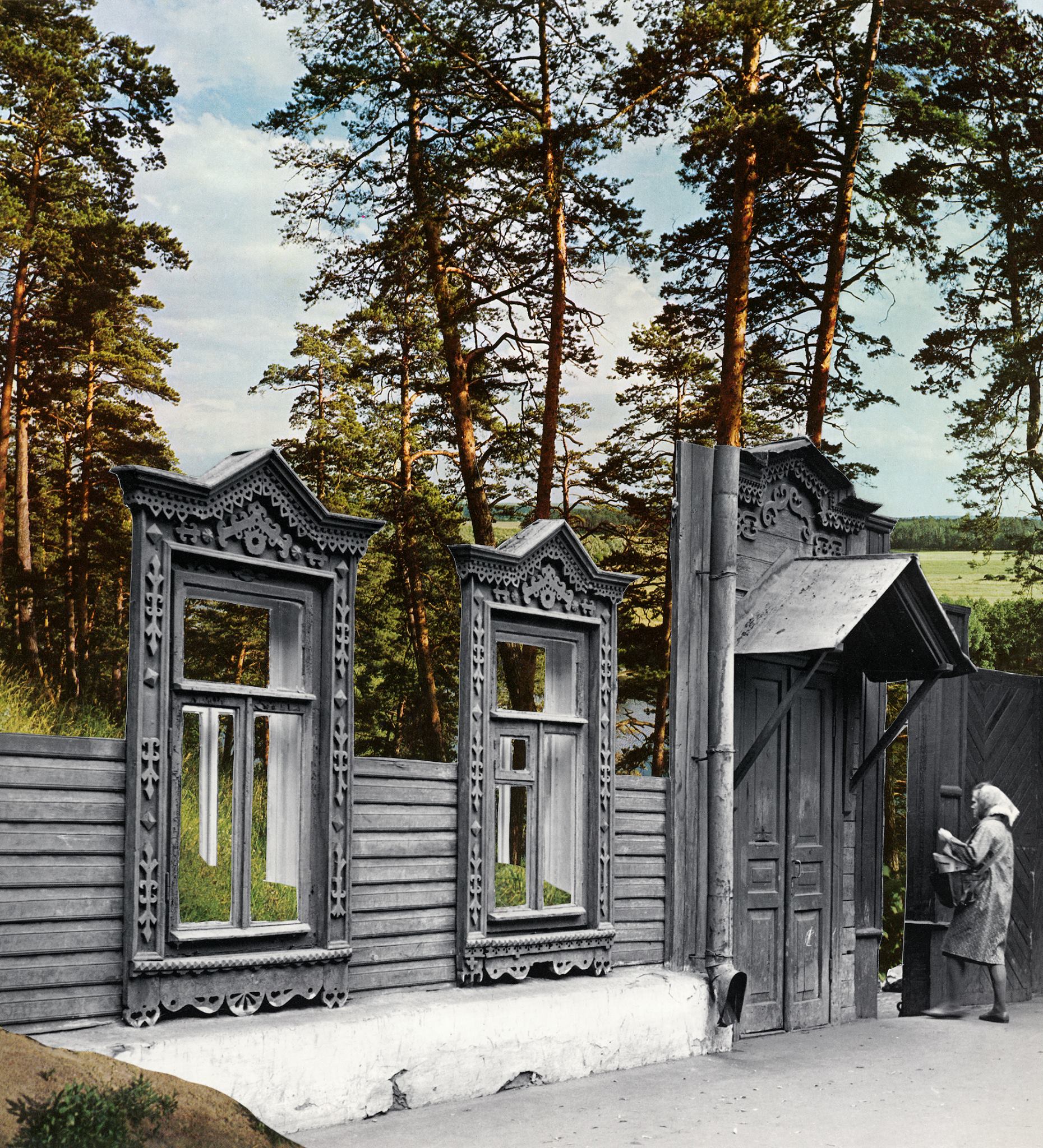The Post-Soviet Collages of Tamara Stoffers3 min read
My body of collages is the result of the curiosity of an outsider on the subject of the USSR, an attempt to deeply comprehend Soviet art and culture through full immersion in the topic. Through my extensive collection of publications, objects and textiles I explore the visual language of the USSR in order to encompass its specifics in my work. Consequently, subjects dominating socialist realism recur, such as the glorification of labour and the heroic depiction of anonymous citizens didactically representing an ideal. The source-images, originating from books from the period of 1963 up to the Glasnost, are transformed into new photographic images through the medium of analogue collage.
My collages are created intuitively, by assembling images with parallel visual rhythms or combining similar perspectives within the photographs. The play of lines and repetition of the watermelons and the contrasting horizontals in the staircase contribute to a harmonious connection. The reducing size of the melons placed higher on the stairs aids the illusion of accordance with natural perspective. Within the process of creation I let myself be guided by the restrictions arising from the physical images available to me, their size and common subject
Within Eastern Europe the images at the base of my collages are ingrained in the collective memory. They therefore are easily read and traceable to a specific time and place. I’ve become familiar with their symbolic and cultural meaning through study and aim to retain the atmosphere communicated by the original images and books within the final collage. Through the distortion of the initial photographs a dissonance appears; it creates a distance that allows the spectator to look at a familiar image and explore it free of their usual associations. I do not aim to guide the viewer in their perception of the image – instead I am curious about their personal interpretation and associations. Therefore the information I provide during exhibitions is often limited to the location pictured and the year the source image was taken.
The original size of the collages depends on the size of the books which were used. In exhibitions they are presented as archival pigment prints to reproduce them in bigger format. This enlarges printing grids, the texture of the original paper and traces left by the manual cuts. By making these visible, I both underline the process the images were subject to as well as the beauty of the non-digital imperfect image.
Most images in the Soviet books I use are staged or calculated, slightly stiff. The theatricality of the poses allows me to place subjects in a strange environment or situation, where their body language doesn’t seem out of place. The collages are usually a mash of two images taken in the same year. The timeframe should remain recognizable, to the point that the informed viewer can narrow down whether the work addresses the early or late seventies. The identity of the people prominently featured in the photographs often remains undisclosed in the books; they are merely depicted to represent a certain profession or activity. Within my images they stay anonymous, their function or pose is accentuated by the new composition. Certain attributes disclose the social status of those depicted, similarly to the amount of phones on the desks hinting at the rank of this chinovnik.
My works were first exhibited in Rotterdam, where spectators often reacted to the atmosphere and aesthetics of the images. While presenting them in Moscow, viewers were eager to discuss their personal connotations with the content and specific details within the images. It has become important to me to present these collages in communities who are familiar with the subject. Their informed viewpoint provides them with a more genuine and comprehensive experience.
It would be especially interesting to me to show these works in Ukraine because of the political approach towards the visual remains and discussion of the Soviet past. The subject remains relevant. Art could be the vehicle to create the possibility for viewers to have an open, vulnerable and depoliticized conversation about recent history based on their personal experience and associations.









